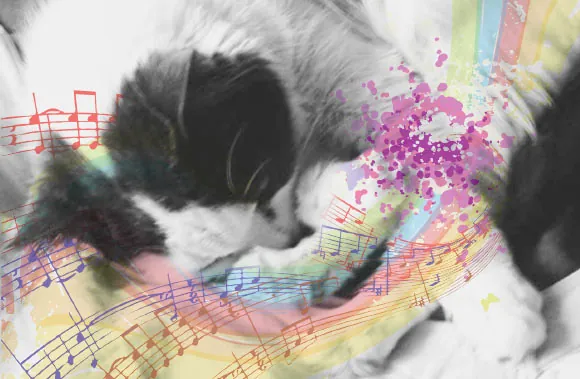
Unlocking the Secrets of Cat Purring: New Genetic Insights!
2025-06-02
Author: Jacques
Purring: A Fascinating Feline Phenomenon
Cats, our beloved companions, have always intrigued us with their behaviors—especially their purring. Despite being popular pets, the science behind their vocalizations has been somewhat of a mystery until now. A groundbreaking study from Kyoto University's Wildlife Research Center has uncovered genetic variations linked to increased purring in domestic cats, shedding light on their unique behavioral traits.
The Genetic Connection Unveiled
First author Yume Okamoto and colleagues embarked on this fascinating research to investigate how variations in the androgen receptor gene (AR), found on the X chromosome, correlate with behaviors like purring. Their insights could revolutionize our understanding of how genetics influence communication in felines.
Why Do Cats Purr?
Purring is more than just a soothing sound; it’s a complex form of communication. Initially developed to signal health and safety to their mothers, this vocalization continues to play a crucial role in social interactions among cats. Whether it’s conveying comfort or inviting play, the full range of its functions is still being explored.
A Call for Cat Owners!
For their study, the team assessed the behaviors of 280 spayed or neutered mixed-breed cats living with their owners. Amazingly, they received enthusiastic responses from 265 cat owners across Japan in just one day, highlighting the public's keen interest in feline research.
Findings That Could Change Cat Care
The research revealed that cats possessing the shorter type of the androgen receptor gene were assessed to purr more by their owners compared to those with the longer variant. Interestingly, while short-type males were more vocal toward humans, short-type females displayed increased aggression towards unfamiliar cats.
Hints of Domestication?
The study’s comparisons with 11 other wild cat species found that closely related breeds like the leopard cat and the fishing cat only carried the short-type gene. This suggests that the longer variations seen in domestic cats may stem from domestication and selective breeding processes.
Paving the Way for Better Cat Care
These findings may not only enhance our understanding of why certain cats purr more, but they could also guide pet owners in predicting behavioral tendencies based on genetic factors. The researchers aim to broaden their investigation to include other feline species to deepen the bond between cats and humans.
Future Research Ahead!
Okamoto expresses hope that this research will lead to improved care and welfare for cats everywhere. As our understanding evolves, so too will our ability to nurture happier relationships with these enigmatic creatures.









 Brasil (PT)
Brasil (PT)
 Canada (EN)
Canada (EN)
 Chile (ES)
Chile (ES)
 Česko (CS)
Česko (CS)
 대한민국 (KO)
대한민국 (KO)
 España (ES)
España (ES)
 France (FR)
France (FR)
 Hong Kong (EN)
Hong Kong (EN)
 Italia (IT)
Italia (IT)
 日本 (JA)
日本 (JA)
 Magyarország (HU)
Magyarország (HU)
 Norge (NO)
Norge (NO)
 Polska (PL)
Polska (PL)
 Schweiz (DE)
Schweiz (DE)
 Singapore (EN)
Singapore (EN)
 Sverige (SV)
Sverige (SV)
 Suomi (FI)
Suomi (FI)
 Türkiye (TR)
Türkiye (TR)
 الإمارات العربية المتحدة (AR)
الإمارات العربية المتحدة (AR)